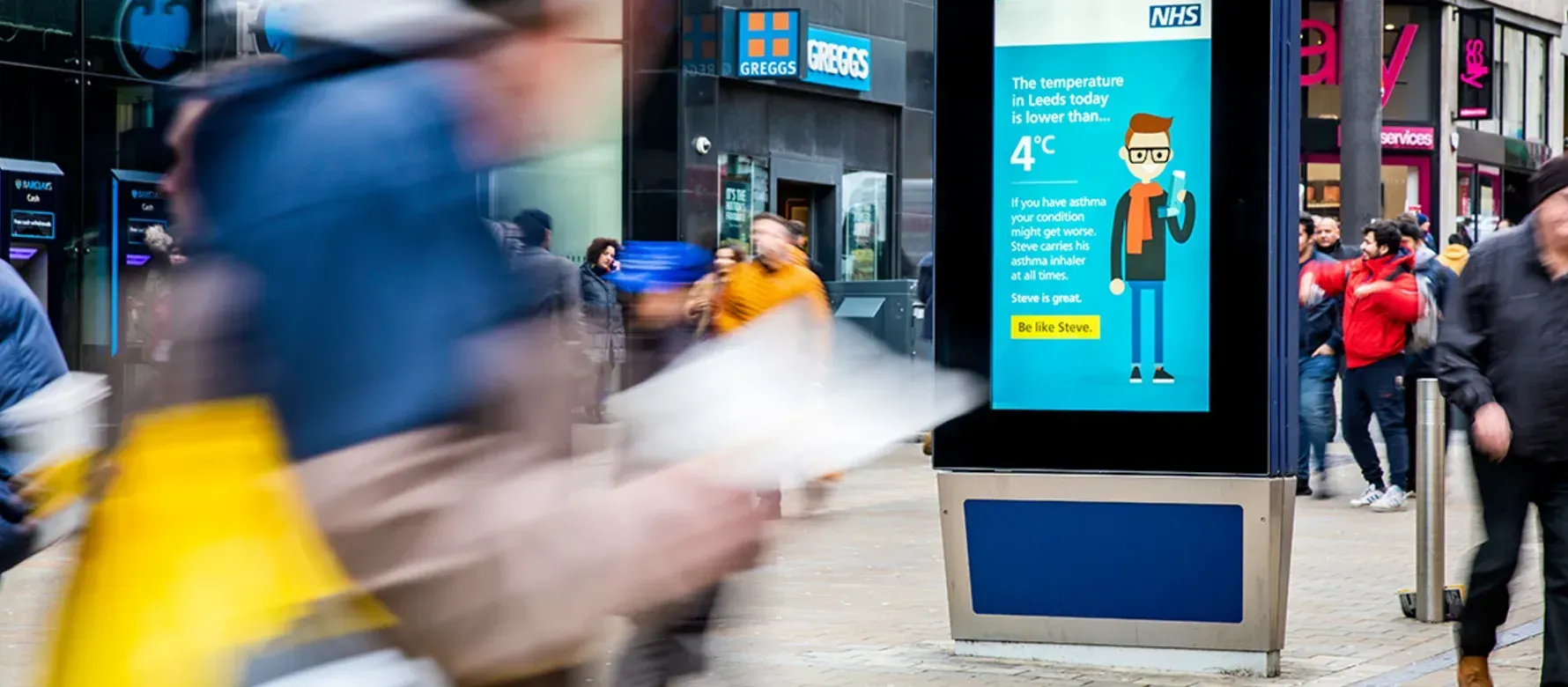ROI Goals Achieved: OOH Marketing Campaigns

In the ever-evolving marketing landscape, Out-of-Home (OOH) advertising stands out as a powerful and effective channel for driving return on investment (ROI). Despite the increasing shift towards digital platforms, the impact of OOH advertising is undeniable. It offers unique advantages that can significantly enhance brand recognition, website traffic, and overall marketing success when combined with digital strategies. This article explores how businesses can achieve ROI goals through strategic OOH marketing campaigns.
The Power of OOH Advertising
Out-of-home advertising, commonly known as outdoor advertising, encompasses various formats, including billboards, transit ads, street furniture, and more. These ads reach consumers in their physical environment, making them a valuable complement to digital marketing efforts. According to industry experts, OOH advertising has evolved into a sophisticated marketing channel that leverages advanced technologies such as QR codes and location data to maximize its impact.
One key benefit of OOH advertising is its ability to enhance brand recognition. By strategically placing ads in high-traffic areas, businesses can capture the attention of a broad audience, increasing their brand's visibility and awareness. This heightened brand awareness can have a ripple effect on other marketing channels, driving more website traffic and boosting social media engagement.

Combining OOH with Digital Marketing
Integrating OOH advertising with digital marketing strategies can create a powerful synergy that amplifies results. For instance, incorporating QR codes into OOH campaigns allows consumers to seamlessly transition from physical ads to digital platforms. When users scan a QR code, they can be directed to a landing page, special offer, or social media profile, allowing them to engage with the brand further.
Moreover, OOH measurement tools enable marketers to assess the impact of their campaigns with precision. Using location data and time-of-day analytics, businesses can optimize their OOH campaigns to reach the right audience at the right time. This data-driven approach ensures that marketing budgets are spent effectively, maximizing the ROI of OOH campaigns.
Measuring the Impact of OOH Campaigns
Measuring the impact of OOH campaigns is crucial for understanding their effectiveness and achieving ROI goals. With technological advancements, marketers can now access sophisticated measurement techniques that provide valuable insights into campaign performance.
One of the primary metrics for evaluating OOH campaigns is foot traffic analysis. By tracking the number of people who visit a location after being exposed to an OOH ad, businesses can gauge the ad's influence on driving real-world actions. Additionally, website traffic analysis can reveal the number of visitors who arrive at a site as a direct result of an OOH campaign, further demonstrating its impact.
Another valuable measurement tool is social media engagement tracking. By monitoring mentions, shares, and interactions related to OOH ads, businesses can assess how well their campaigns resonate with the target audience. This data helps marketers refine their messaging and creative strategies to improve future campaigns.

Achieving ROI Goals with OOH Campaigns
To achieve ROI goals with OOH marketing campaigns, businesses must adopt a strategic approach that aligns with their overall marketing objectives. Here are some key steps to ensure success:
- Define Clear ROI Goals: Businesses should establish specific ROI goals before launching an OOH campaign. These goals may include increasing brand awareness, driving website traffic, or boosting sales. Clear objectives provide a roadmap for campaign planning and evaluation.
- Select the Right Locations: The success of an OOH campaign largely depends on the choice of locations. High-traffic areas with a target audience that aligns with the brand's demographics are ideal for maximizing exposure and engagement.
- Leverage Creative Content: Compelling and visually appealing content is essential for capturing the audience's attention. Brands should invest in creative designs that convey their message effectively and leave a lasting impression on viewers.
- Integrate with Digital Channels: Combining OOH with digital marketing channels, such as social media and email marketing, can extend the campaign's reach and impact. Incorporate QR codes and social media handles in OOH ads to encourage users to engage with the brand online.
- Monitor and Optimize: Continuous campaign performance monitoring is vital for optimizing results. Utilize data analytics to assess the effectiveness of OOH campaigns and make data-driven decisions to improve future initiatives.
The Future of OOH Advertising
As technology continues to evolve, the future of OOH advertising holds exciting possibilities. Integrating augmented reality (AR) and virtual reality (VR) into OOH campaigns promises to create immersive and interactive consumer experiences. These innovations will enable brands to engage their audience in new and meaningful ways, further enhancing the ROI potential of OOH advertising.
In conclusion, OOH marketing campaigns remain valuable for achieving ROI goals in today's competitive landscape. By combining the strengths of OOH advertising with digital strategies, businesses can create impactful campaigns that drive brand recognition, website traffic, and overall marketing success. With careful planning, measurement, and optimization, OOH campaigns can deliver significant returns on investment and contribute to long-term business growth.
TALK TO A PRO
We're here to bring your brand to life!
Stay Connected with BrandXR
Create Augmented Reality for Free!
Create, Publish, and Measure 3D Augmented Reality Experiences Without Having to Code.














